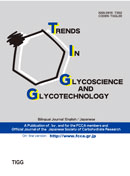
TRENDS IN GLYCOSCIENCE AND GLYCOTECHNOLOGY
Scope & Guideline
Illuminating the Path of Glycan Applications
Introduction
Aims and Scopes
- Glycan Structure and Function:
Research on the structural characterization of glycans, including their role in cellular processes and interactions. - Glycosylation Mechanisms:
Studies on the enzymatic processes and pathways involved in glycosylation, exploring how these modifications affect protein function. - Glycobiology and Disease:
Investigations into the implications of glycan alterations in various diseases, including cancer, neurodegeneration, and metabolic disorders. - Glycoengineering and Synthetic Glycans:
Development of novel glycoengineering techniques and synthetic strategies to produce glycans for therapeutic applications. - Analytical Techniques in Glycoscience:
Application of advanced analytical methods, such as mass spectrometry and NMR, for the analysis of glycan structures and dynamics.
Trending and Emerging
- Glycan Functions in Stem Cells:
Increasing research on the role of glycans in stem cell biology and pluripotency, indicating their importance in developmental biology and regenerative medicine. - Cancer Immunotherapy and Glycans:
A notable rise in studies exploring the role of glycans in cancer immunotherapy, particularly in the context of tumor-associated carbohydrate antigens. - Synthetic Glycans and Glycoengineering:
Emerging interest in synthetic glycans and glycoengineering techniques, showcasing innovative approaches to produce glycans for therapeutic use. - Glycan Interactions with Viral Infections:
An increasing number of studies examining how glycans influence viral entry and infection, highlighting their relevance in virology and infectious diseases. - Glycans in Neurobiology and CNS Disorders:
Research focusing on the role of glycans in neurobiology and their implications in central nervous system disorders is gaining traction, reflecting a broader interest in neurodegenerative diseases.
Declining or Waning
- Metabolic Engineering of Glycans:
Research focused on metabolic engineering for glycan production has decreased, possibly due to the emergence of more efficient synthetic methods. - Basic Glycan Chemistry:
Studies centered solely on the fundamental chemistry of glycans, without biological context, are less frequent, indicating a shift towards applied glycoscience. - Glycan-based Drug Development:
Although still relevant, there appears to be a waning focus on traditional glycan-based drug development strategies as innovative therapeutic approaches gain attention. - Glycan Profiling in Basic Research:
Research dedicated to glycan profiling without clear clinical or biological implications is declining, suggesting a move towards more translational research. - Historical Perspectives on Glycoscience:
Papers focusing on historical reviews or perspectives of glycoscience are less common, reflecting a trend towards contemporary and applied research topics.
Similar Journals

HETEROATOM CHEMISTRY
Innovating Beyond Carbon: Discover Heteroatom ChemistryHeteroatom Chemistry is a prominent open-access journal dedicated to advancing the field of heteroatom chemistry, with a particular focus on the chemistry of elements other than carbon in organic compounds. Published by Wiley-Hindawi, this journal provides researchers, professionals, and students with a platform to disseminate and access novel research findings related to the synthesis, properties, and applications of heteroatom-containing compounds. Since its inception in 1990 and gaining open access status in 2019, the journal has fostered academic collaboration and innovation throughout its converged years, although it currently holds a category quartile ranking of Q4 in Chemistry (miscellaneous) and ranks #319 out of 408 in general chemistry within Scopus. With its commitment to high-quality research and broad accessibility, Heteroatom Chemistry is poised to be an essential resource for anyone looking to explore the rich and varied applications of heteroatom chemistry in diverse scientific fields.
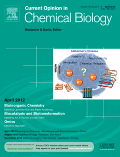
CURRENT OPINION IN CHEMICAL BIOLOGY
Fostering Scholarly Dialogue in BiochemistryCurrent Opinion in Chemical Biology, published by Elsevier Science Ltd, stands at the forefront of its field, specializing in analytical chemistry and biochemistry. With an impressive impact factor and ranked in the top quartile (Q1) for both its disciplines, this journal consolidates significant advancements and perspectives in chemical biology from 1997 to 2024. Its Scopus rankings reflect its prestigious standing, with the journal positioned at #11 in Analytical Chemistry and #32 in Biochemistry, indicating a remarkable percentile standing of 93rd and 92nd, respectively. With a commitment to highlight cutting-edge research and foster scholarly dialogue, Current Opinion in Chemical Biology serves as an invaluable resource for researchers, professionals, and students seeking to stay abreast of the latest developments and innovations in the chemical biology landscape.

Carbohydrate Research
Connecting researchers to the latest in carbohydrate discoveries.Carbohydrate Research, published by Elsevier Science Ltd, stands as a pivotal platform for advancing the understanding of carbohydrate chemistry and its applications, with fine coverage extending from 1965 to 2024. This esteemed journal, with an ISSN of 0008-6215 and E-ISSN 1873-426X, is positioned in the Q2 category for Analytical Chemistry and Organic Chemistry, and Q3 for both Biochemistry and Medicine (miscellaneous) as of 2023, reflecting its substantial impact within these disciplines. With a Scopus rank placing it in the 58th and 57th percentiles for Analytical and Organic Chemistry respectively, Carbohydrate Research attracts a diverse readership including researchers, professionals, and students keen on exploring the latest developments in carbohydrate science. Though it operates under a traditional publishing model, the journal fosters a rich environment for scholarly communication and innovation in carbohydrate-related research, making it an invaluable resource for those committed to unraveling the complexities of this essential biomolecule.
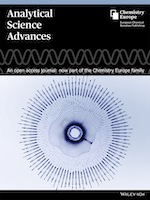
Analytical Science Advances
Unveiling Insights in Analytical Techniques and InstrumentationAnalytical Science Advances is a dynamic journal published by WILEY, dedicated to the ever-evolving field of analytical chemistry. With an ISSN of 2628-5452, this open-access platform aims to disseminate high-quality research and insightful reviews that push the boundaries of analytical methodologies and instrumentation. Since its inception in 2020, the journal has gained traction, securing a commendable Q2 ranking in 2023 within its category, highlighting its significance in the scientific community. Currently positioned at Rank #68 out of 156 in Scopus' analytical chemistry category, it boasts a 56th percentile ranking, reflecting its contributions to advancing analytical techniques. Researchers, professionals, and students will find this journal an invaluable resource for keeping abreast of the latest developments, emerging technologies, and innovative approaches in analytical science, ensuring the journal's relevancy and influence in shaping future discoveries.

TISSUE & CELL
Fostering Excellence in Biological SciencesTISSUE & CELL is a prominent academic journal, published by CHURCHILL LIVINGSTONE, that has been at the forefront of research in the fields of cell biology, developmental biology, and miscellaneous areas of medicine since its inception in 1969. With a strong focus on high-quality research, TISSUE & CELL has established itself within the academic community, holding a Q3 ranking in both Cell Biology and Developmental Biology, and a Q2 ranking in Medicine as of 2023. The journal aims to disseminate significant findings that contribute to the understanding of tissue structure and function, helping to bridge the gap between basic biological research and clinical applications. While it operates on a subscription basis and does not currently offer Open Access options, the journal remains a vital resource for researchers, professionals, and students interested in cutting-edge developments in the biological sciences. The journal's address is located in the scenic city of Edinburgh, further establishing its academic heritage in the United Kingdom.

BIOPHYSICAL JOURNAL
Unveiling the complexities of biological phenomena.BIOPHYSICAL JOURNAL, published by CELL PRESS, is a leading interdisciplinary platform dedicated to advancing the field of biophysics. With an ISSN of 0006-3495 and an E-ISSN of 1542-0086, this esteemed journal has garnered a prestigious position within the academic community, reflected in its ranking as Q1 in Biophysics for the year 2023. Its Scopus rank of #44/152 in the category of Biochemistry, Genetics, and Molecular Biology showcases its significant influence, with a notable percentile of 71st. Since its inception in 1960, the journal has published cutting-edge research that explores the quantitative and qualitative aspects of biological phenomena, making it essential for researchers, professionals, and students in the field. While the journal operates under a subscription model, its rigorous peer-review process ensures the highest quality of published work, contributing to groundbreaking discoveries and innovations that shape the future of biophysics. For more information or to explore the latest research, please visit the journal’s platform.
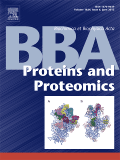
BIOCHIMICA ET BIOPHYSICA ACTA-PROTEINS AND PROTEOMICS
Pioneering Research in Biochemistry and BiophysicsBIOCHIMICA ET BIOPHYSICA ACTA-PROTEINS AND PROTEOMICS, published by Elsevier, is a prestigious academic journal that serves as a vital resource for researchers, professionals, and students in the fields of biochemistry, biophysics, and proteomics. With an ISSN of 1570-9639 and an E-ISSN of 1878-1454, this journal features high-impact research articles aimed at advancing our understanding of protein structure, function, and interactions, contributing significantly to both theoretical and applied sciences. Recognized for its quality, it proudly holds a Q1 ranking in Analytical Chemistry and Biophysics, and Q2 in Biochemistry for 2023, alongside notable Scopus rankings that reflect its influence in the realm of molecular biology. The journal's commitment to disseminating essential findings supports the ongoing evolution of proteomic sciences and encourages collaborative discourse among the global scientific community. For aspiring authors, the journal offers open access options, enabling broad visibility of their work. Join the conversation in this dynamic field and contribute to shaping the future of protein research!

GLYCOCONJUGATE JOURNAL
Unveiling the Complexities of Cellular InteractionsGlycoconjugate Journal is a pivotal publication in the fields of Biochemistry, Cell Biology, and Molecular Biology, published by Springer in the Netherlands. With a history spanning from 1984 to 2024, this peer-reviewed journal focuses on the essential roles of glycoconjugates in various biological processes, offering a platform for high-quality research articles, short communications, and reviews that contribute to advancements in this complex and dynamic field. The journal holds a commendable impact factor, categorized within Q3 quartile across its domains in the 2023 Scopus rankings. While not an open-access journal, it ensures broad accessibility through military-level research content aimed at facilitating essential academic and practical advancements. Researchers, professionals, and students can rely on the Glycoconjugate Journal for valuable insights and developments in glycobiology, underscoring its importance in fostering a deeper understanding of cellular interactions and molecular mechanisms.
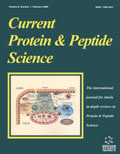
CURRENT PROTEIN & PEPTIDE SCIENCE
Fueling Innovation Through Cutting-Edge Protein ResearchCURRENT PROTEIN & PEPTIDE SCIENCE, published by Bentham Science Publishers, is a pivotal journal dedicated to the dynamic and rapidly evolving fields of protein and peptide research. With an ISSN of 1389-2037 and an E-ISSN of 1875-5550, this esteemed journal serves as a platform for disseminating cutting-edge findings from various disciplines, including biochemistry, cell biology, and molecular biology. Recognized for its influence with a 2023 Scopus ranking placing it within the top quartiles of its categories—Q3 in Biochemistry, Q4 in Cell Biology, and Q2 in Medicine—the journal not only enhances the visibility of critical research but also supports the academic community in advancing our understanding of the molecular foundations of life. Established in 2000 and running through 2024, CURRENT PROTEIN & PEPTIDE SCIENCE is positioned to cater to the interests of researchers, professionals, and students alike, providing them with open access to vital knowledge that fuels innovation and scientific inquiry in the United Arab Emirates and beyond.

ChemistryMethods
Innovating Chemical Research Through Methodological ExcellenceChemistry Methods, published by WILEY, is an esteemed journal in the field of chemical sciences that serves as a vital platform for disseminating cutting-edge research and methodologies across various domains of chemistry. With a focus on practical approaches in areas such as fluid flow and transfer processes, spectroscopy, electrochemistry, and catalysis, this journal has achieved impressive ranks in Scopus—including a notable 15th position in both fluid flow and spectroscopy categories, which reflects its significant contribution to advancing the discipline. Although Chemistry Methods operates under a traditional access model, it remains crucial for researchers, professionals, and students who are eager to engage with high-quality original research and reviews. Since its inception in 2021, the journal's objective has been to bridge the gap between theoretical knowledge and practical application in chemistry, fostering innovation and collaboration within the global scientific community.